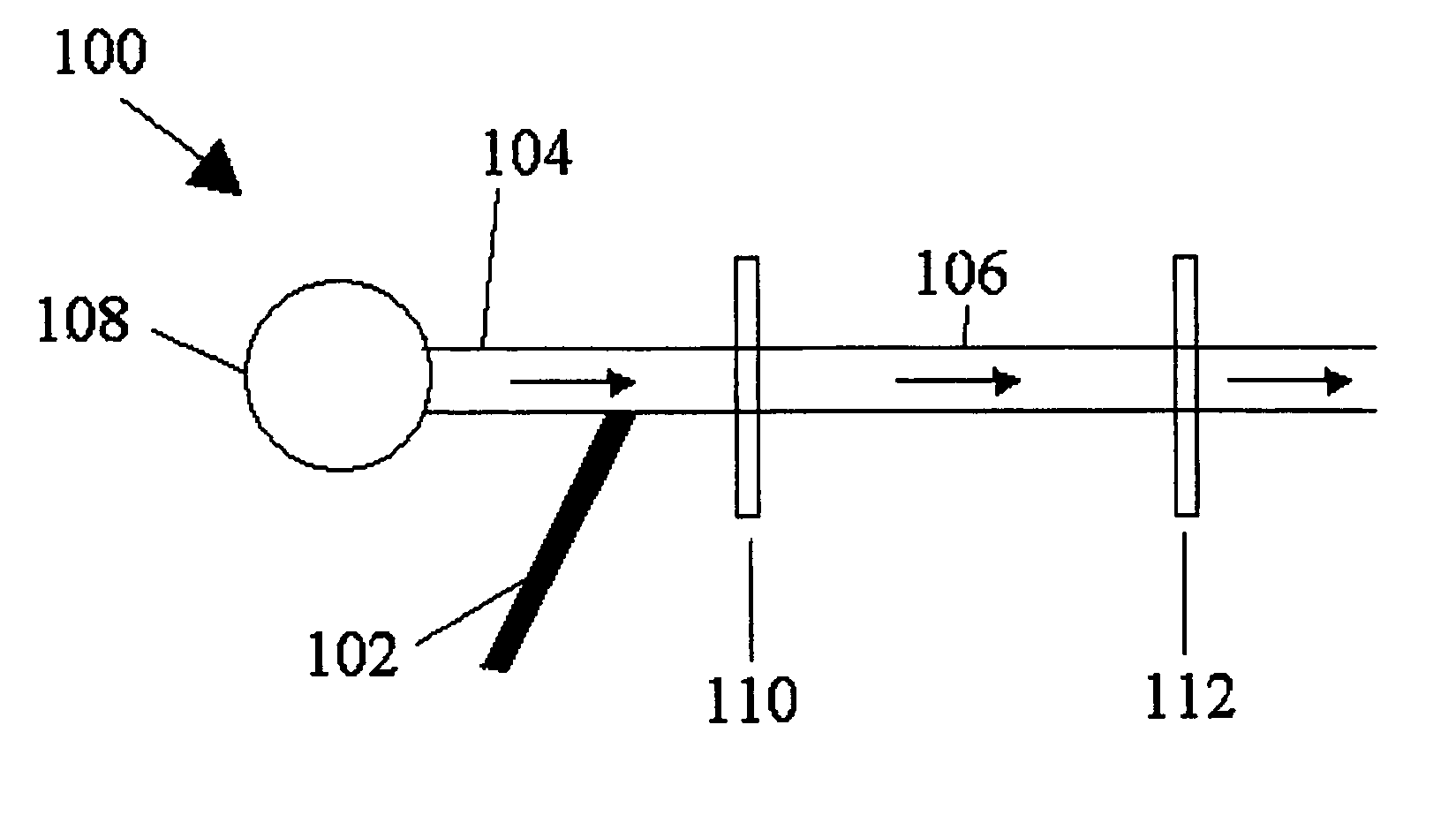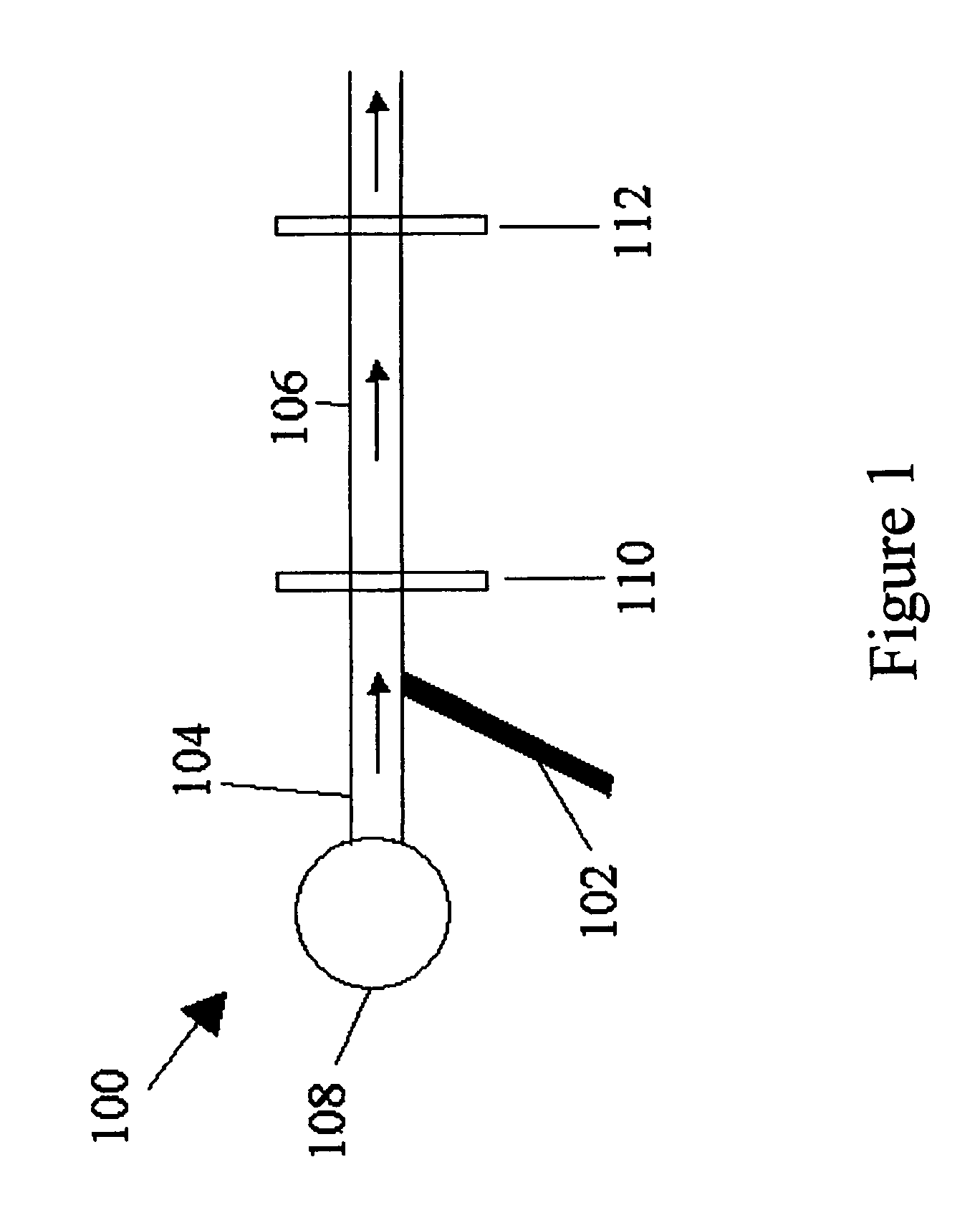Method for measuring diffusivities of compounds using microchips
a technology of microchips and compounds, applied in chemical methods analysis, laboratory glassware, instruments, etc., can solve the problems of inconvenient use, single point methods that require extra steps to determine velocity, and inability to accurately assess the change of plugs of materials over the length of channels, so as to reduce the overall concentration and the overall concentration. , the effect of lowering the peak in the downstream concentration profil
- Summary
- Abstract
- Description
- Claims
- Application Information
AI Technical Summary
Benefits of technology
Problems solved by technology
Method used
Image
Examples
example 1
[0052]In this example, the diffusivity was determined based on data detected at a first and fourth detector (i.e., concentration profiles 201 and 204, respectively). However, any two of the concentration profiles of FIG. 2 could be used in the same manner described below. The first concentration profile 201 was modeled using an expression for Gaussian curve f1(x,τ1). The expression f1(x,τ1) was convoluted using the Green's function to create an estimate f4′(x,τ4) for the concentration profile measured by the fourth detector. A value of the Taylor-Aris dispersion coefficient K was then derived by setting the expression for the estimated concentration profile f4′(x,τ4) equal to the measured concentration profile f4(x,τ4). FIG. 3 shows that the estimated concentration profile f4′(x,τ4) 204 calculated using the derived value of K is essentially identical to the actual measured concentration profile f4(x,τ4) 206. Once the Taylor-Aris diffusion coefficient K was found, the molecular diffu...
example 2
[0054]For this second example, the Taylor-Aris dispersion coefficient is calculated by minimizing the value of an expression for the error in an estimated concentration profile. The error was determined by assuming a value of molecular diffusivity D, calculating the corresponding value of K, and inserting that value of K into the previously presented expression for error. To determine the value of D at which the error is minimized, the value of the error is plotted in FIG. 5 as a function of D. The correct value for the molecular diffusivity for the fluorescein dye was determined by finding the lowest point of the curve, where the error is at a minimum (i.e., where the estimated concentration profile f4′(x,τ4) most closely matches the measured concentration profile f4(x,τ4). The value of D at the minimum error is approximately 330 μm2 / s. This value of D agrees closely with the value of D calculated in the previous example.
PUM
| Property | Measurement | Unit |
|---|---|---|
| diameter | aaaaa | aaaaa |
| diameter | aaaaa | aaaaa |
| concentration | aaaaa | aaaaa |
Abstract
Description
Claims
Application Information
 Login to View More
Login to View More - R&D
- Intellectual Property
- Life Sciences
- Materials
- Tech Scout
- Unparalleled Data Quality
- Higher Quality Content
- 60% Fewer Hallucinations
Browse by: Latest US Patents, China's latest patents, Technical Efficacy Thesaurus, Application Domain, Technology Topic, Popular Technical Reports.
© 2025 PatSnap. All rights reserved.Legal|Privacy policy|Modern Slavery Act Transparency Statement|Sitemap|About US| Contact US: help@patsnap.com



